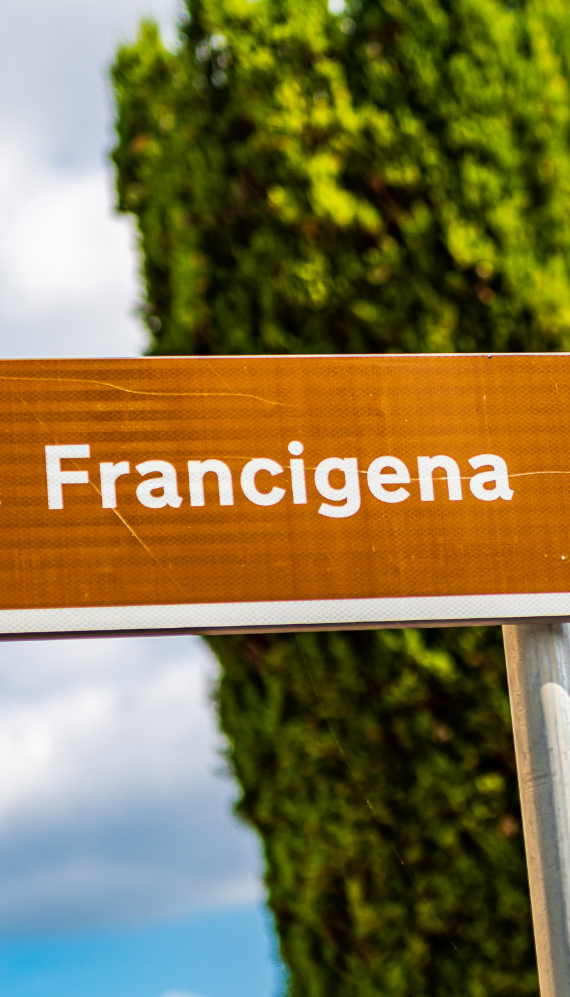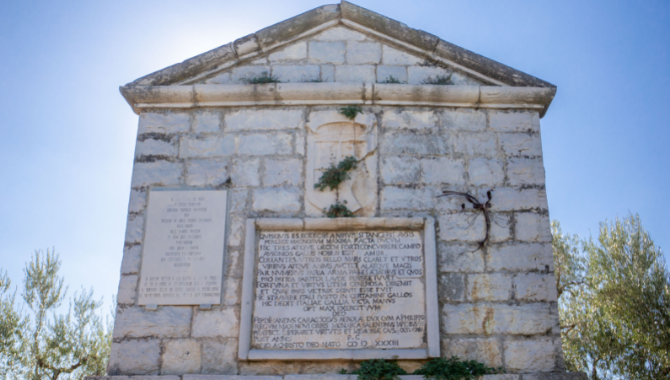
Trekking along the Southern Francigena street
Itinerary description
Starting from Andria, with a small detour you reach the entrance to the City of Corato, in a path shaded by the centenary foliage of the downy oak, typical of the Apulian naturalistic landscape, which will lead to the centenary olive tree. Continuing you will come across the ancient Rock Church of Santa Lucia, located on the Trajan road axis (concluded in 109 AD to connect Benevento with Brindisi).
Following the traces of the life of Luisa Piccarreta, known as the Saint, one can reach the church of San Vito, from the 11th-12th century, probably belonging to the Knights Templar and built on the ancient Via Trajan.
Taking up the marked path of the Via Francigena, the Mother Church rises in via Duomo where the ancient fresco of the Madonna of Constantinople is kept. Leaving the city and crossing its entire city center (near the former convent of San Cataldo - the current seat of the Municipality) you come across the Corsa dei Cappuccini, which houses the canvas by the Flemish painter Gaspar Hovic, depicting San Nicola.
Travel duration
More than 6 hours
Points of interest
Epitaph of the Barletta Challenge
The history of Southern Italy, and therefore of Puglia, is studded with foreign invasions and clashes for the possession of territories. At the beginning of the sixteenth century, the French and the Spanish were competing for the Kingdom of Naples. Sometimes, to resolve disputes over some possessions, rather than resorting to battles in the open field, they preferred to rely on chivalrous challenges. Among these the most famous is the one held in Trani, also known with the name of "Disfida di Barletta". The Challenge of Barletta was a clash held on February 13, 1503 in the morning of Sant'Elia (in the territory of Trani, at the time of the events under Venetian jurisdiction), between thirteen Italian knights (under Spanish aegis) and as many French knights. The confrontation ended with the victory of the Italians.
Even in the 21st century you can see the shrine with the epitaph that Ferrante Caracciolo, 1st Duke of Airola, had erected in 1583. The monument was recovered in 1846 by the Metropolitan Chapter of Trani. In 1903 the verses of Giovanni Bovio were added.
Quisquis es, egregiis animum si tangeris ausis,
Perlege magnorum maxima facta ducum.
Hic tres atque decem forti concurrere campo
Ausonios Gallis altus adegit amor,
Certantes utros bello Mars claret et utros
Viribus atque animis auctet alatque magis.
Par numerus, paria arma, pares ætatibus, et quos
Pro Patria pariter laude perisse iuvet.
Fortuna et virtus litem generosa diremit:
Et quæ pars victrix debuit esse, fuit.
Hic stravere Itali iusto in certamine Gallos,
Hic dedit Italiæ Gallia victa manus.
Path
Gallery

